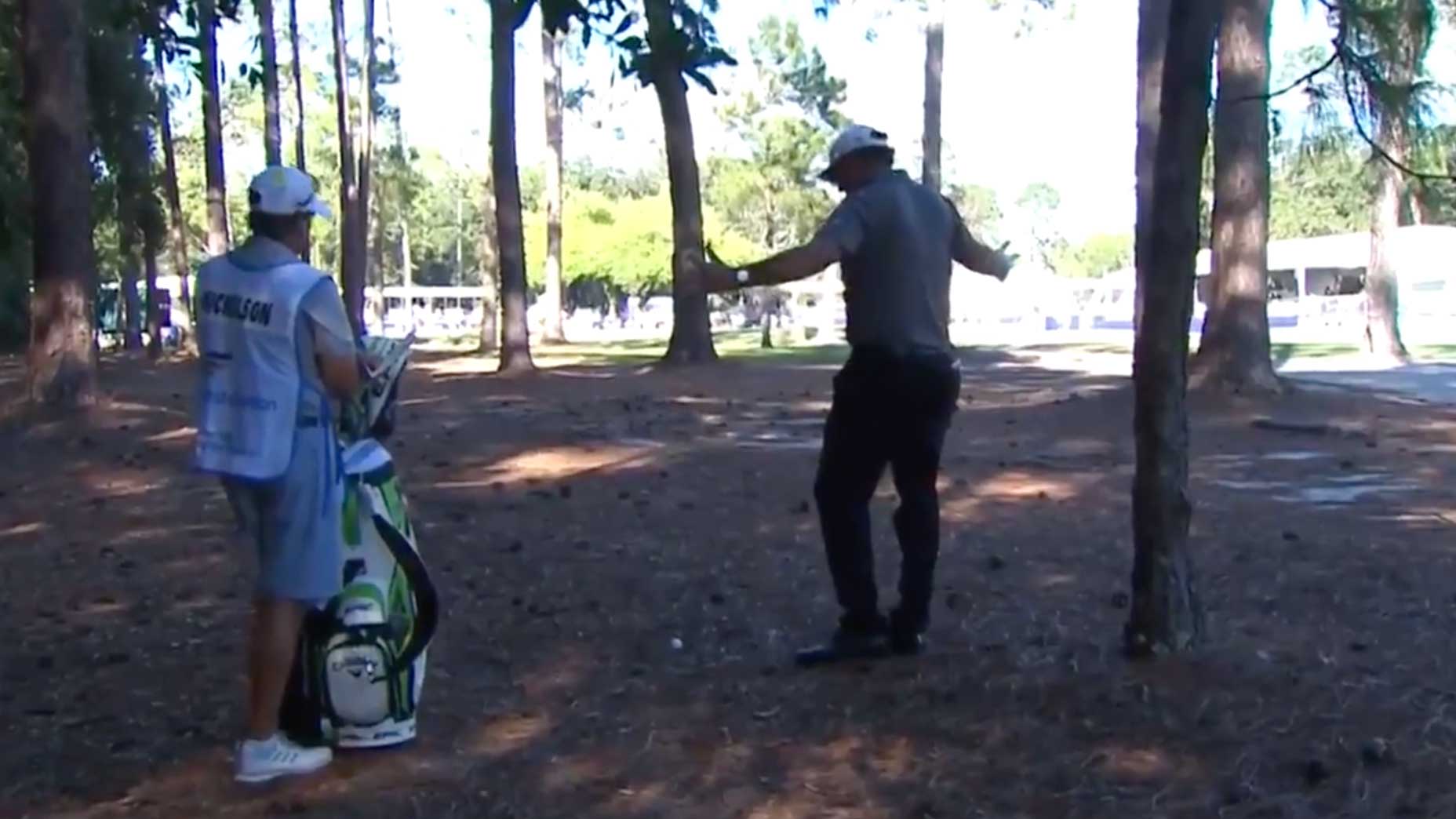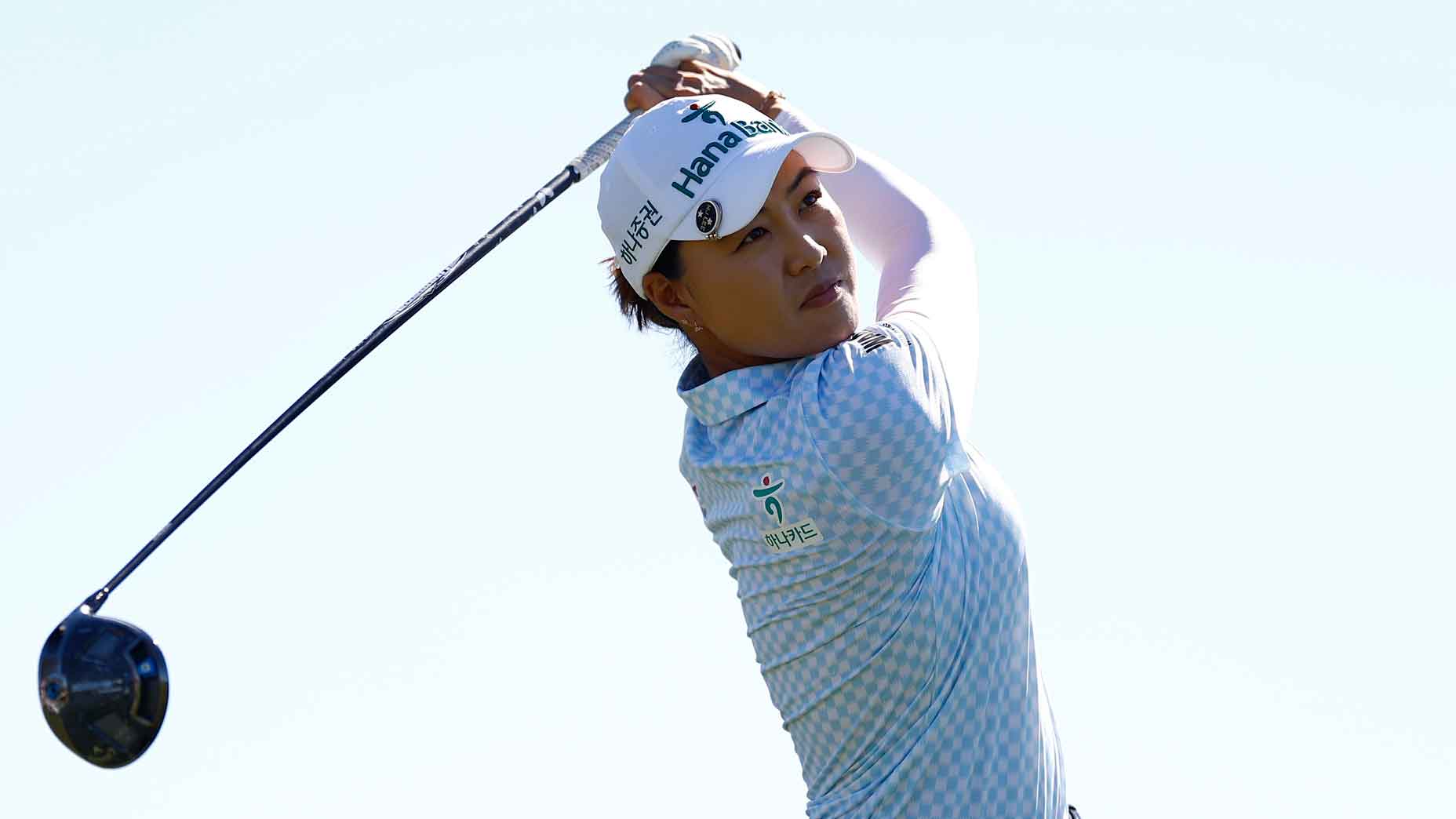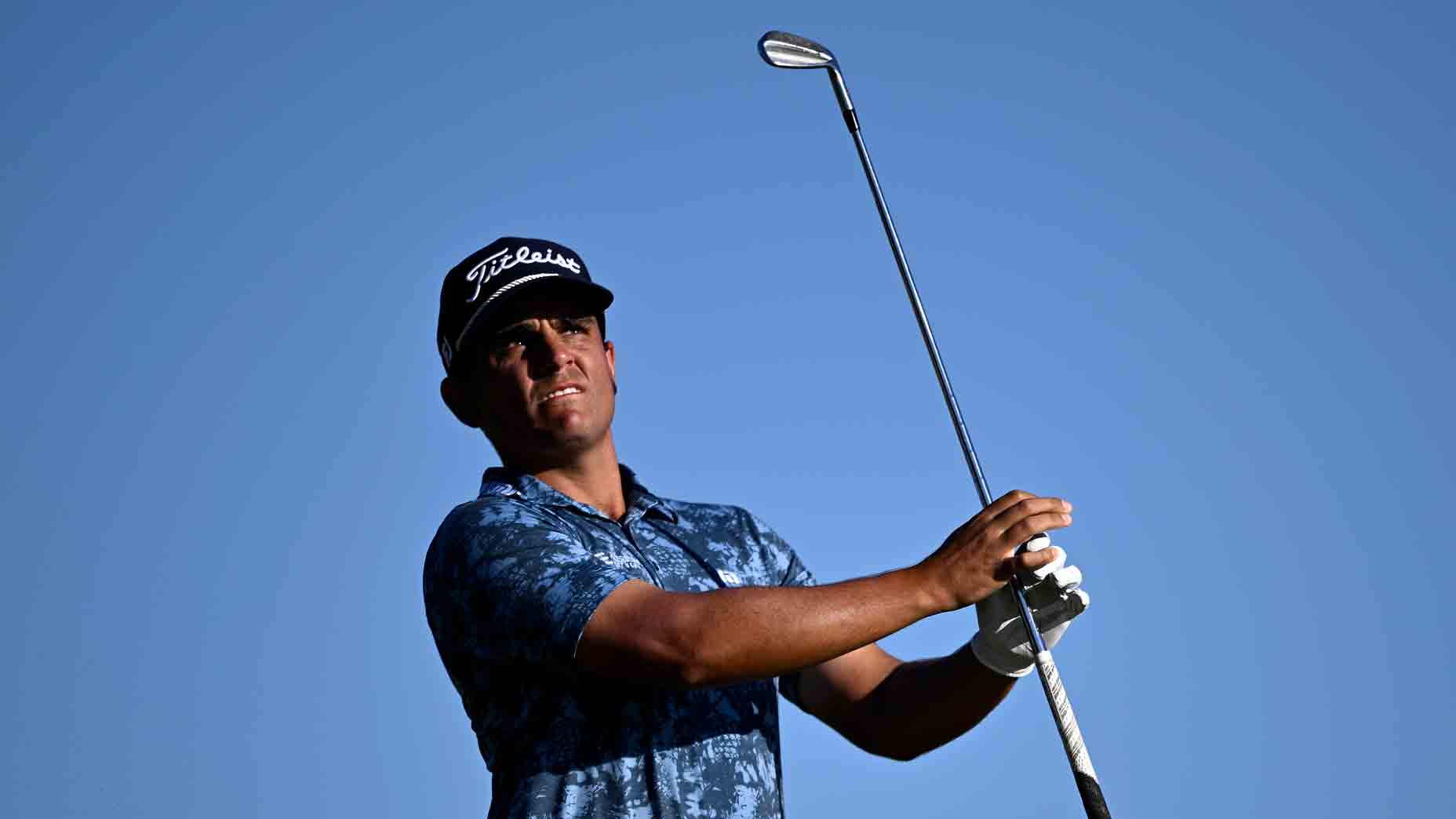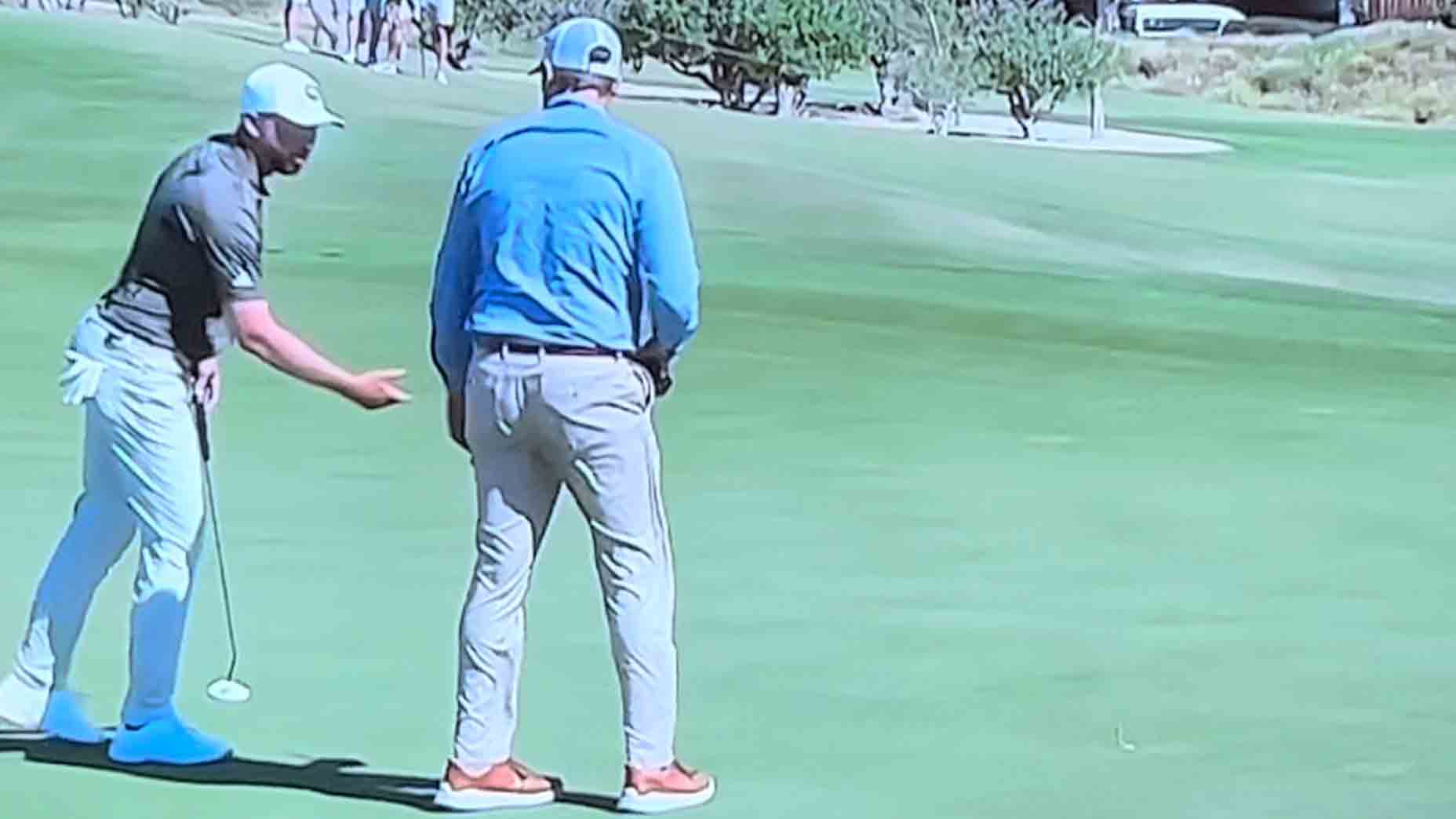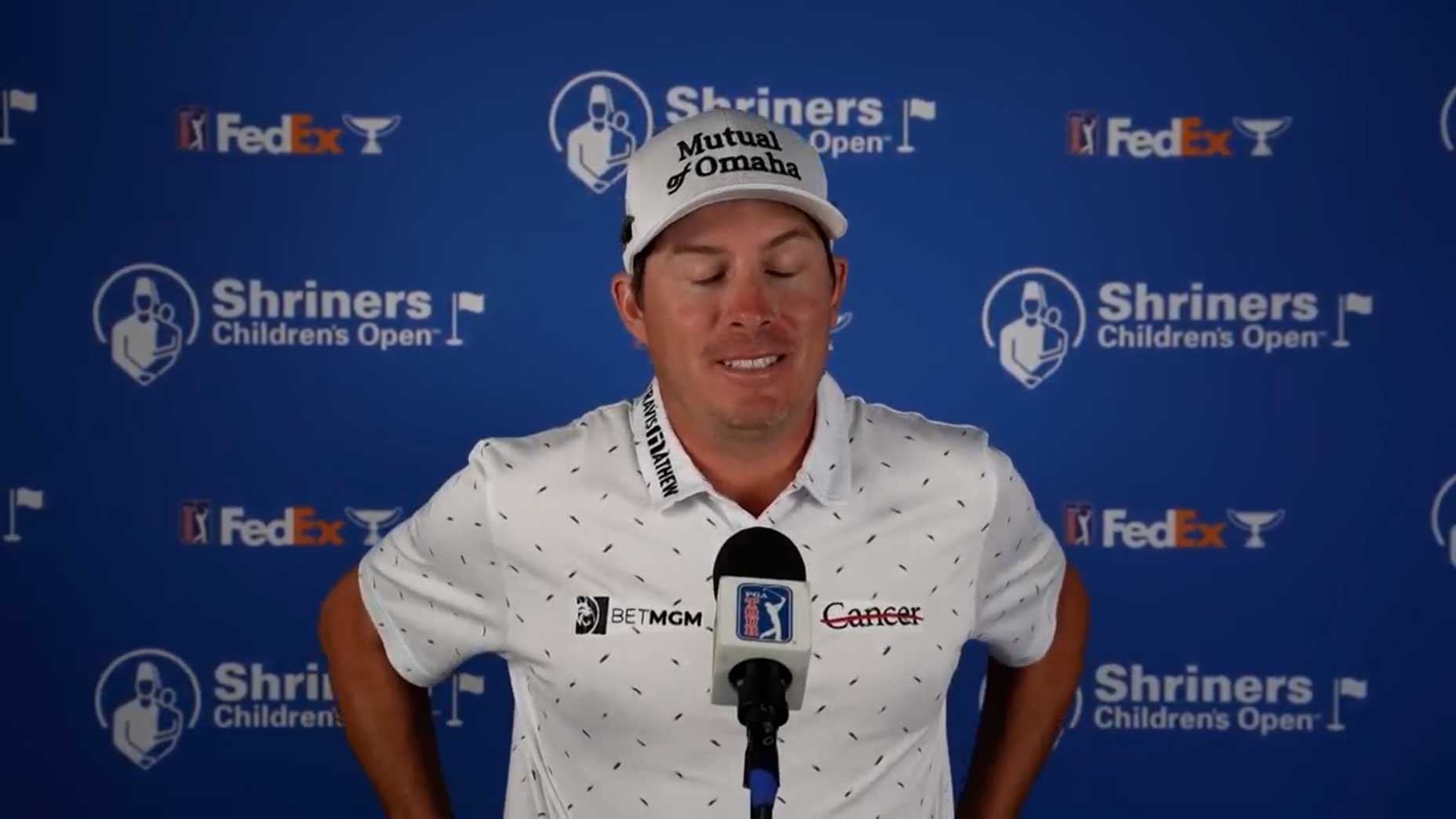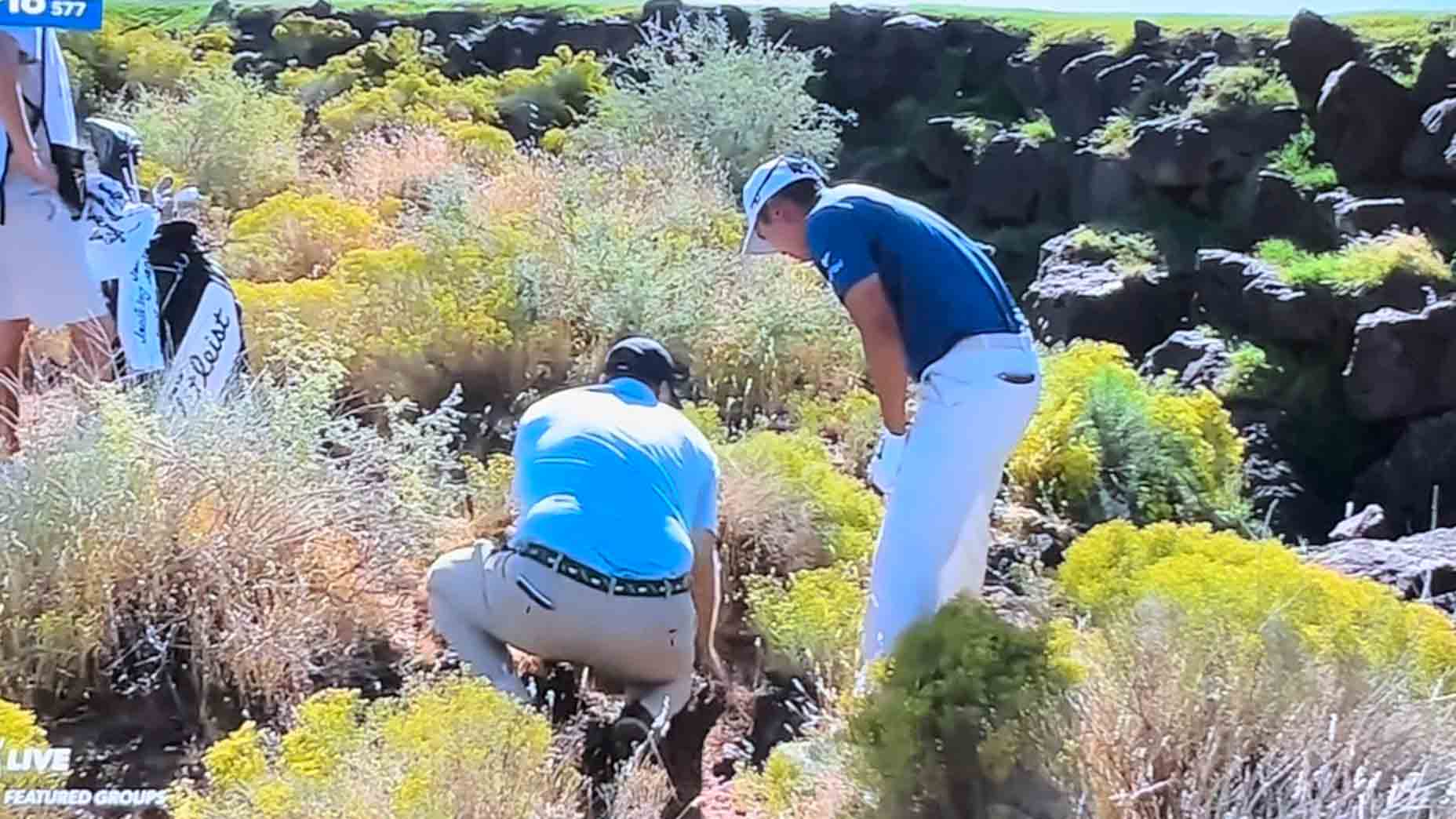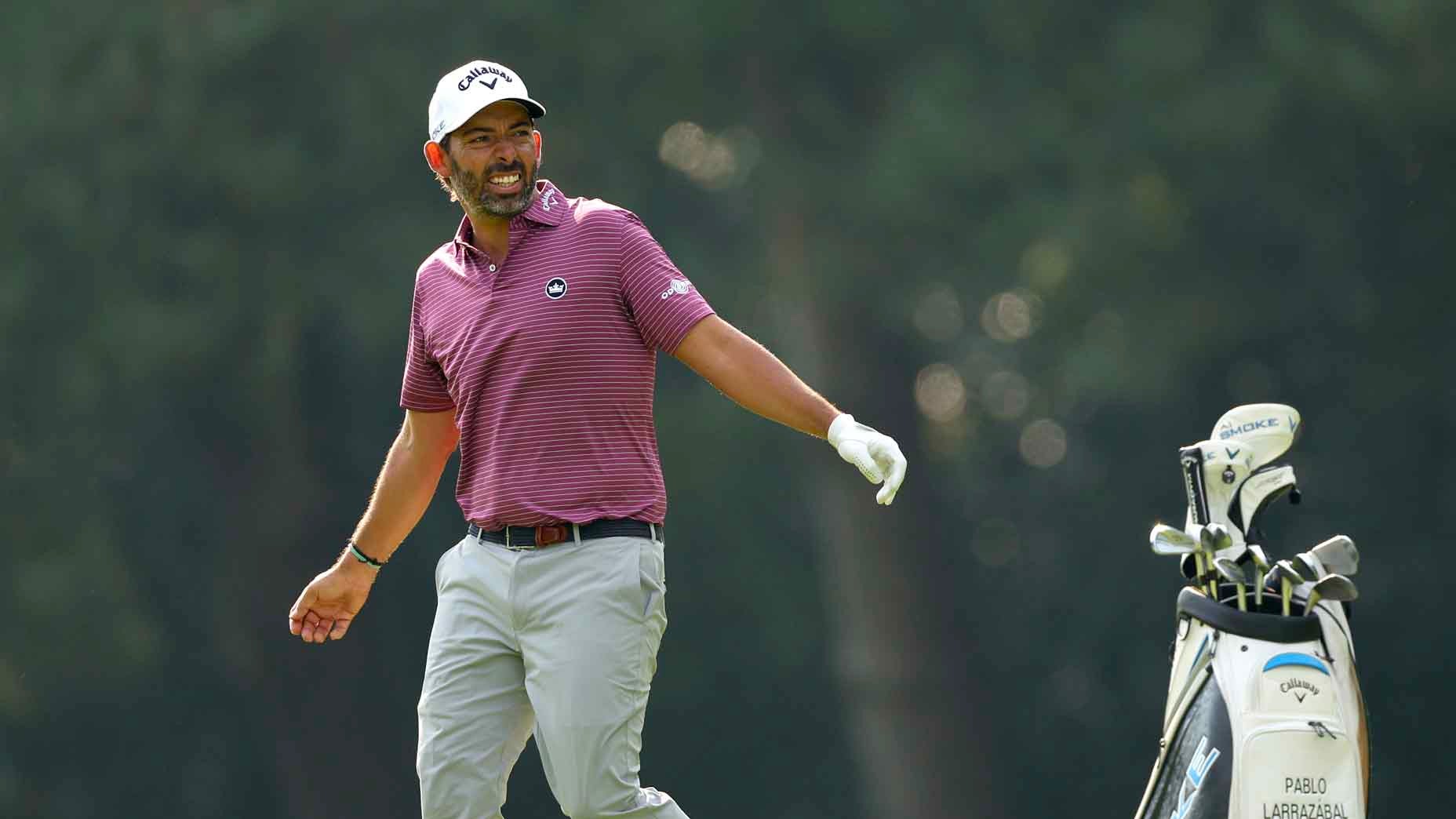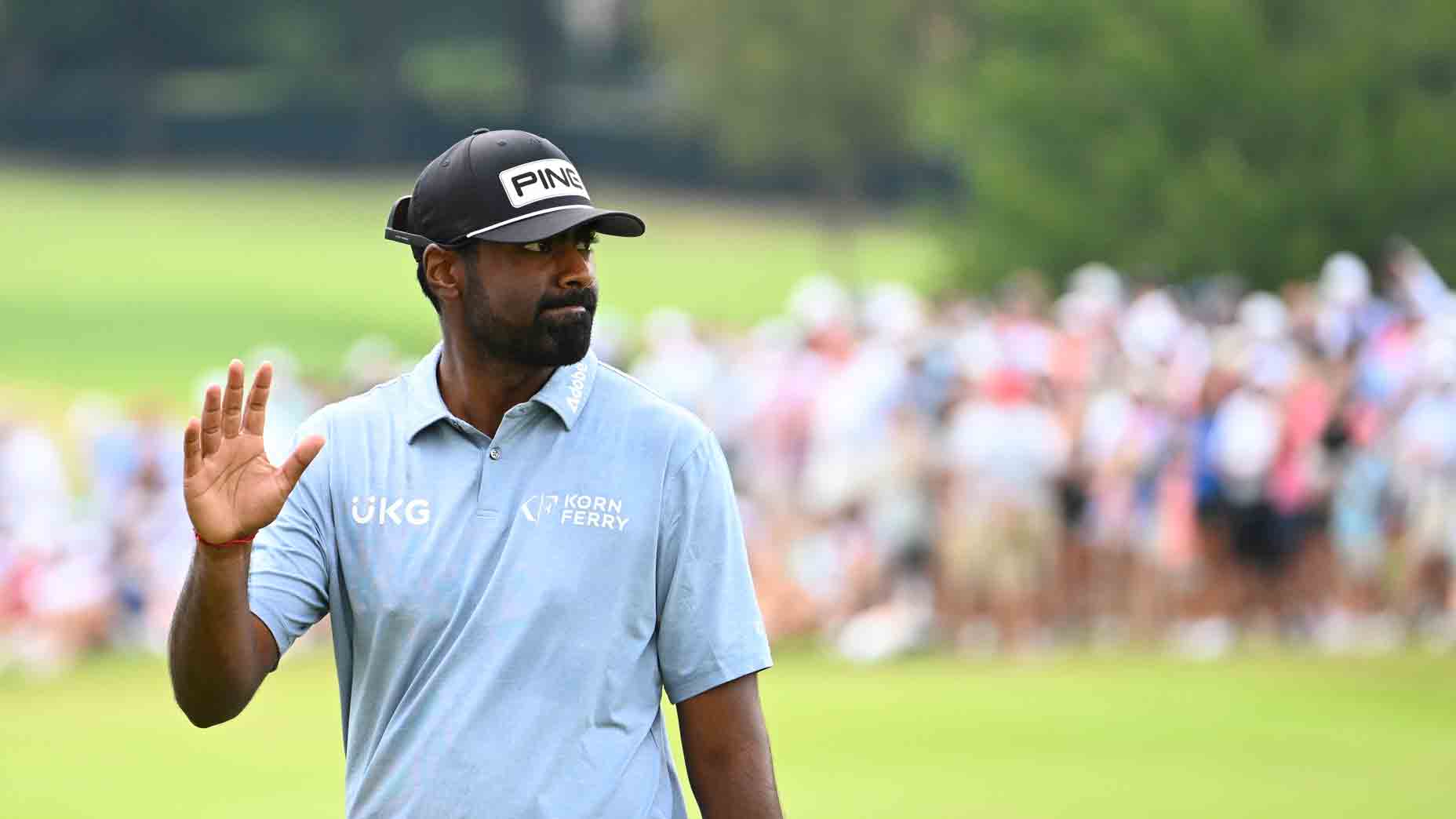The nuanced rule at the heart of Phil Mickelson’s moving-ball episode
- Share on Facebook
- Share on Twitter
- Share by Email

Phil Mickelson assesses a shot from the pine straw on Sunday at the Constellation Furyk & Friends.
Getty Images
If a ball moves in the forest and no one can say exactly what caused that movement, is it a penalty?
It wasn’t for Phil Mickelson this past Sunday in a pivotal moment during the third and final round of a Champions Tour event that he went on to win.
Why was Mickelson not slapped with an extra stroke?
To understand the decision, it helps to have a closer look at the Rules of Golf and how they have evolved to where they are today.
We’ll get into those details in a moment.
First, though, let’s review what happened during Sunday’s play.
On the 16th hole of Timuquana Country Club, in a tournament known as the Constellation Furyk & Friends, Mickelson sent a wayward drive into the trees, where his ball came to rest on a bed of pine straw. Prior to striking his next shot, Mickelson cleared away some debris around his ball. Nothing unusual there. He was well within his right to do so.
Phil Mickelson dodges potential wild rules infraction, then wins by two strokesBy: Nick Piastowski
The need for a ruling arose some 30 seconds later, when Mickelson, standing away from the ball, saw that it had moved. Summoning a rules official, Mickelson described what had happened and was told by the official that he was “just going to have to make that call whether you caused it to move.”
Mickelson made that call. He determined that he had not caused the ball to move, a judgment that was confirmed later by video review.
Bottom line: no harm, no foul.
At least not under the rules as they are today.
If, however, we turned the clock back prior to 2004, Mickelson would have been in a violation of the rules and hit with a one-shot penalty.
What’s the relevance of 2004? That was the year the governing bodies eliminated Rule 18-2c, which levied a one-shot penalty if a player’s ball moved after that player touched any loose impediment lying within a club-length of the ball.
Pebble. Pinecone. Pine straw. Name the object. It didn’t matter. Neither did your intent. If you moved something, anything, within a club-length of your ball and your ball moved afterwards, one shot was added to your score.
That rule was intended to keep things simple. But, as Craig Winter, Senior Director, Rules of Golf & Amateur Status for the United States Golf Association puts it, “really simple rules can sometimes seem unfair.”
And so, 18-2c was scratched from the rulebook. Most reasonable people would agree that the game is better for it.
In the years since, of course, many other rules of the game have changed.
One that has been mentioned on social media and in other press accounts of Sunday’s Mickelson incident is a 2019 modification to Rule 9.2, which applies to “all questions of fact about why a ball at rest moved.”
Prior to 2019, the standard used in this rule was “weight of evidence.”
As the USGA’s Winter describes it, prior to 2019, “you were basically looking at a 50/50 balance on the scale.”
Phil Mickelson’s odd rules situation shined a spotlight on the significance of golf’s honor codeBy: Michael Bamberger
If, for instance, the evidence titled the scale toward a player having caused the ball to move, that was your decision. It didn’t matter how far the scale had tilted, only that it was tilting in that direction.
The problem with that approach was that given all the potentially complicating factors (such as what the player did near the ball and how much time elapsed before the ball moved, to say nothing of wind, lie and other course conditions), you wound up with a lot of controversial “close calls.” It could be a headache.
In 2019, to minimize those headaches, the standard was changed to “known or virtually certain.” The upshot of this was to make decisions more clear-cut. If you were going to rule that a player had caused his or her ball to move, you had to be all but certain of it, as in 95-percent sure. If you weren’t all but certain that player or a caddie or some other outside influence had caused the ball to move, then you had to assume that natural forces were the cause.
In the wake of Sunday’s decision, some commentators have suggested that the ruling might have turned out differently if the tournament had been held in 2018.
Winter says that’s not the case, because even under the old standard, the weight of evidence would not have shown that Mickelson had caused the ball to move.
That’s not to say the 2019 change hasn’t affected a great many rulings. It has.
But in the case of Phil on Sunday, the decision would have been the same.
Latest In Instruction

Josh Sens
Golf.com Editor
A golf, food and travel writer, Josh Sens has been a GOLF Magazine contributor since 2004 and now contributes across all of GOLF’s platforms. His work has been anthologized in The Best American Sportswriting. He is also the co-author, with Sammy Hagar, of Are We Having Any Fun Yet: the Cooking and Partying Handbook.

